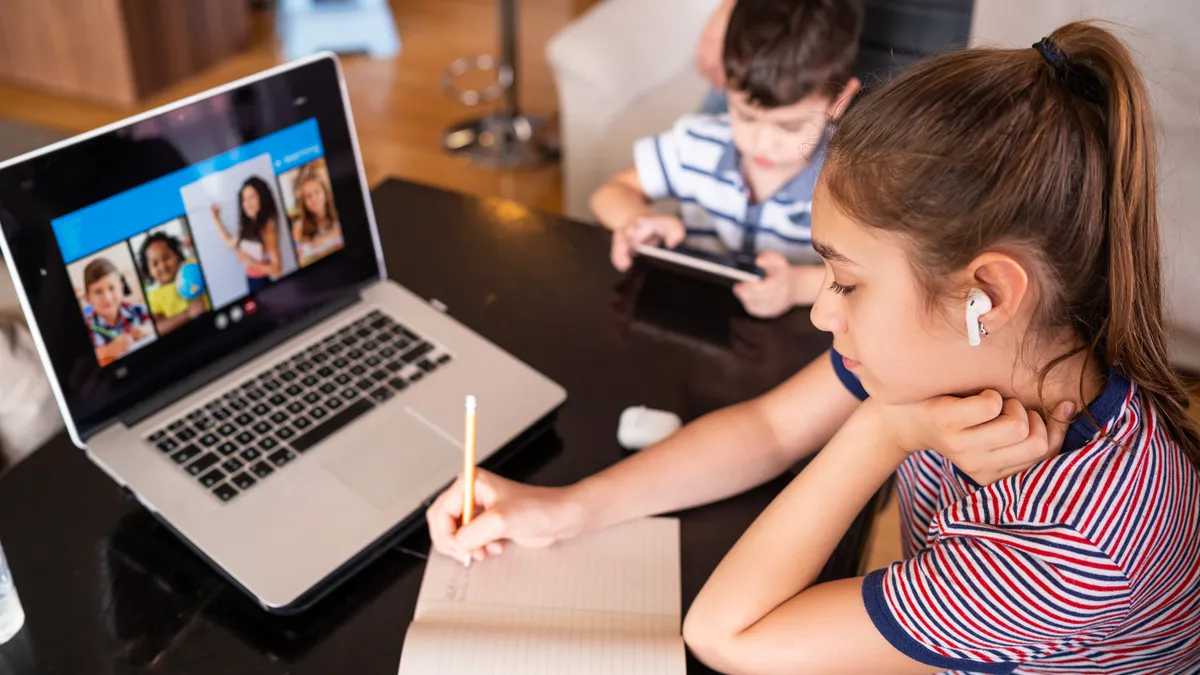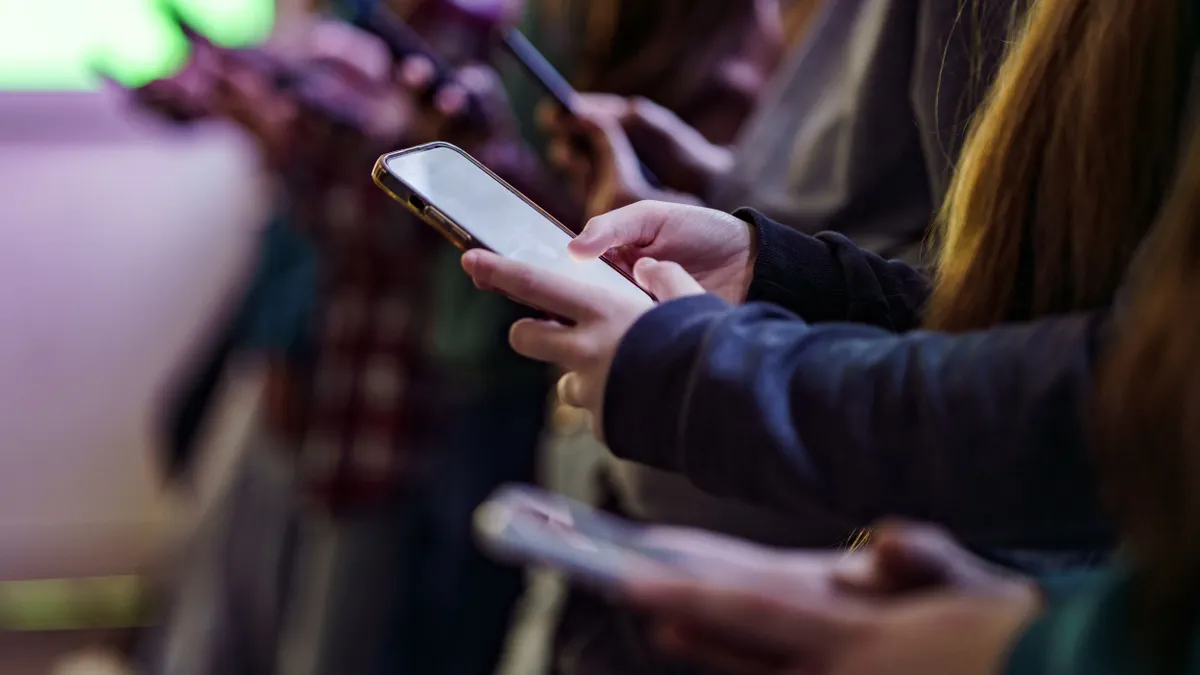STEAM educator Denise Wright’s students may be online this school year, but tomato seeds she mailed to their homes allowed them to take a virtual spin in space. Through a project called Tomatosphere, some of the 8th-grade earth and space science students in South Carolina's Horry County Schools who wanted to participate were sent seeds that had been on the International Space Station, while some were sent seeds that had not.
Students followed the progress of their growing plants and those of their classmates on video, discussing notes such as why some germinated and what may have impacted them.
Wright knows online learning doesn’t replicate the same experience as being in-person, especially around building a classroom community. But she believes that even in a virtual space, educators who make the effort can see connections built between students and themselves.
“I won’t say the relationships are the same as face-to-face [when you're] online. They’re not. But there are ways you can foster relationships,” Wright, a NASA Solar System Ambassador, told K-12 Dive. “You just have to be positive and enthusiastic, and that shines through no matter what environment. And once students know that, you get those relationships.”
As the pandemic continues to affect K-12 learning, educators are applying what they gleaned from the past year to build online curriculum that not only educates students, but builds stronger peer-to-peer and peer-to-teacher connections. From project-based learning, small group instruction and the use of methods like the workshop model, these options are proving effective for creating a sense of community within remote classrooms.
Launch projects
Seeds are not the only thing Wright has planted in her classroom this year to keep students growing and engaged. She also taps community sharing boards including Padlet and Jamboard, where students have posted about their new pets and even shared images of their at-home rock and mineral collections.
“These are basically virtual bulletin boards,” she said. “And they’re a great way for building community.”
Wright also sends her class a text message at the start of every week through Remind, a private messaging service for K-12, and uses an app called Wheel of Names to pick a random student in attendance that day, sending a NASA sticker to their home.
“That’s been a great way to motivate them to show up,” she said. “And they get super excited because they actually get something personal mailed to their home, which helps to create both excitement and community.”
In some districts, projects can involve an entire school. That includes an annual holiday tradition at Monte del Sol Charter School in Sante Fe, New Mexico, where the teachers and grades 7-12 students — all remote — held their gathering virtually. Students produced videos, for example, allowing them to share about pets and siblings and strengthen their bonds with fellow students.
“We did this to have a community feeling of leaving for the holidays,” Alfredo Luján, a 7th-grade English language arts teacher at the school and president of the National Council of Teachers of English, told K-12 Dive. “It’s as we would have done physically at the school.”
Create small groups
In addition to his regular classes, Luján, as all teachers at the school, works with a small online group of 12 students who meet twice a week for additional academic and personal support.
That group is going to be invited to move their meeting — at least once — to an in-person outing. As of Feb. 8, New Mexico gave secondary schools permission to return to a hybrid model with some in-person learning. To Luján, that means the possibility of bringing back another annual tradition for 7th-graders — a hike up Sun Mountain, from which the school gets its name.
In the fall, 60 students at a time traditionally take the hike, which was put on hold amid virtual learning. But with in-person learning now an option, Luján said he will be bringing four students from his small group on the hike at a time, with social distancing and masking in place, while students at home join in through images from Luján’s phone. In this way, students will take part in this annual ritual together.
"We use the hike literally and also metaphorically," he said. "It’s also for 7th-graders to see obstacles they might encounter in their school life while climbing from grade 7 through 12."
In Pennsylvania's Phoenixville Area School District, educators also use small groups to help strengthen bonds within classes, whether that’s giving students and families additional time with teachers, having classes engage in games and competitions, or creating drive-through opportunities at the school.
With hybrid learning an option, educators have found success working with a group of all-virtual students and then a group of in-person students separately. This helps students more easily collaborate, while allowing teachers to focus on one group at a time, said Jessica Kilmetz, the district’s curriculum director.
“Creating time for collaboration in small groups is also a priority for us,” she told K-12 Dive via email. “And it helps build a strong community and strong teacher-student relationships.”
And at Lyles Middle School in Garland, Texas, Mario Martinez uses assignments to shrink the space between the 7th- and 8th-grade math students. He may ask his classes to answer questions from what kind of business they would like to open and even whether they would be willing to hire friends and family.
“Many students had similar aspirations/dreams to each other, and discussions like this help humanize the people on the screen they may never have seen all year,” he told K-12 Dive by email.
Adopt the workshop model
Classic in-person learning methods can also be tweaked to build connections between students learning from home.
In Kentucky's Christian County Schools, for example, instructional coach Jettie Payne pivoted from using the workshop model in-person to adapting it for online classes. This includes students doing problems alone, using technology to problem-solve, working with a peer in a virtual breakout room, or writing about the math problem and possible solutions, and then coming back and explaining their ideas to the class at-large.
“Kids are social learners, and so it’s important to keep this up,” Payne said. “I notice with the whole group, kids are less likely to speak up. When it’s even just me and three other people, I am more apt to share my thinking and ask questions.”
Payne, who is also an adjunct teacher in the education department at Murray State University’s Hopkinsville Regional Campus, knows many teachers may not be as comfortable adopting online learning tools as others, including building virtual breakout rooms for students. But she would like to see more educators dive in and try, as the rewards can be worth the effort for students.
“I know they are overwhelmed already,” she said. “But it would be great to see more teachers doing small groups and differentiate with technology. I tell them to just take a risk and explore the different technology resources out there to make it as engaging as possible.”




















